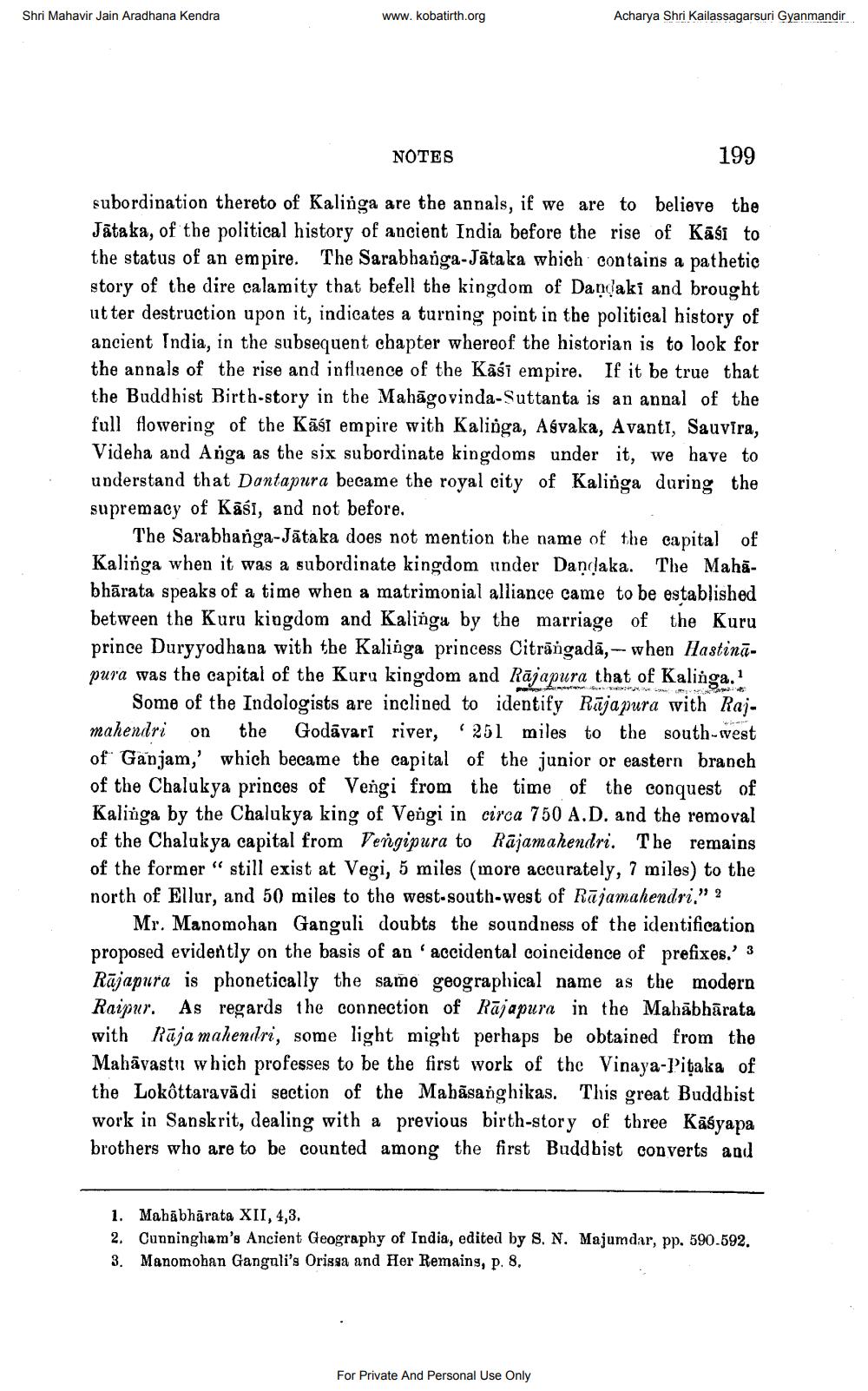________________
Shri Mahavir Jain Aradhana Kendra
www.kobatirth.org
Acharya Shri Kailassagarsuri Gyanmandir
NOTES
199
subordination thereto of Kalinga are the annals, if we are to believe the Jātaka, of the political history of ancient India before the rise of Kāsi to the status of an empire. The Sarabharga-Jätaka which contains a pathetic story of the dire calamity that befell the kingdom of Dandaki and brought ut ter destruction upon it, indicates a turning point in the political history of ancient India, in the subsequent chapter whereof the historian is to look for the annals of the rise and influence of the Kāśi empire. If it be true that the Buddhist Birth-story in the Mahāgovinda-Suttanta is an annal of the full flowering of the Kāśi empire with Kalinga, Asvaka, Avanti, Sauvira, Videha and Anga as the six subordinate kingdoms under it, we have to understand that Dantapura became the royal city of Kalinga during the supremacy of Kāśi, and not before.
The Sarabhanga-Jätaka does not mention the name of the capital of Kalinga when it was a subordinate kingdom under Dandaka. The Mahābhārata speaks of a time when a matrimonial alliance came to be established between the Kuru kingdom and Kalinga by the marriage of the Kuru prince Duryyodhana with the Kalinga princess Citrāngadā, - when Hastināpura was the capital of the Kuru kingdom and Rājapura that of Kalinga.
Some of the Indologists are inclined to identify Rājapura with Rajmahendri on the Godāvarī river, "251 miles to the south-svest of Ganjam,' which became the capital of the junior or eastern branch of the Chalukya princes of Vengi from the time of the conquest of Kalinga by the Chalukya king of Vengi in circa 750 A.D. and the removal of the Chalukya capital from Vengipura to Rajamahendri. The remains of the former still exist at Vegi, 5 miles (more accurately, 7 miles) to the north of Ellur, and 50 miles to the west-south-west of Rūjamahendri." ?
Mr. Manomohan Ganguli doubts the soundness of the identification proposed evidently on the basis of an accidental coincidence of prefixes.' 3 Rājapura is phonetically the same geographical name as the modern Raipur. As regards the connection of Rājapura in the Mahābhārata with Rāja mahendri, some light might perhaps be obtained from the Mahāvastu which professes to be the first work of the Vinaya-Pitaka of the Lokottaravādi section of the Mabāsarghikas. This great Buddhist work in Sanskrit, dealing with a previous birth-story of three Kāsyapa brothers who are to be counted among the first Buddbist converts and
1. Mahābhārata XII, 4,3. 2. Cunningham's Ancient Geography of India, edited by S. N. Majumdar, pp. 590.592. 3. Manomohan Gangali's Orissa and Her Remains, p. 8,
For Private And Personal Use Only




